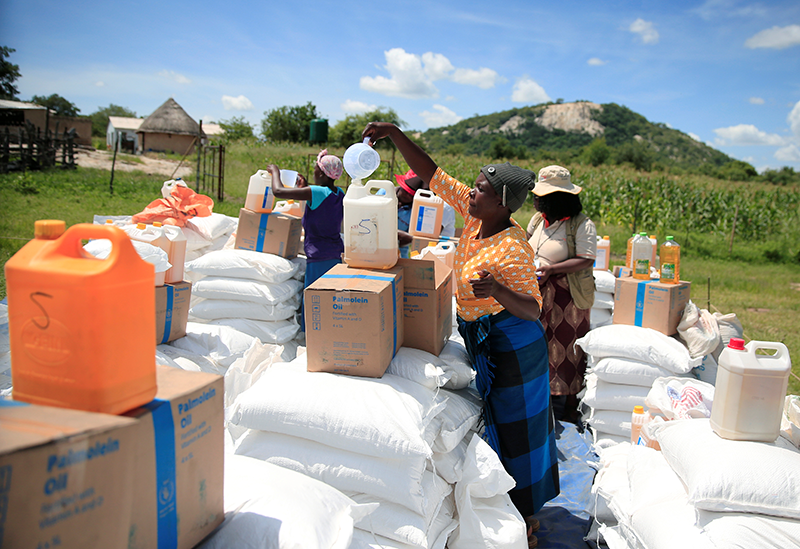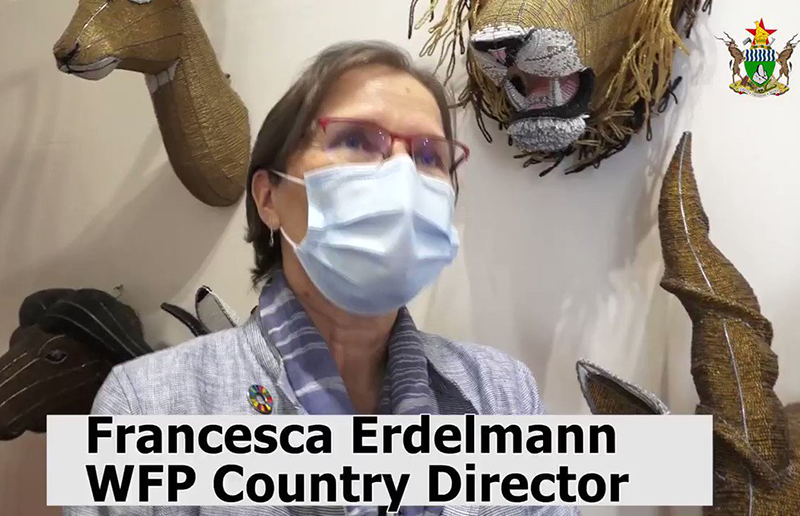- Agriculture
- No Comment
DROUGHT CRISIS: UN says 2.7mln Zimbabweans need food aid; United States donates US$11mln

By Associated Press
HARARE: The United Nations (UN) World Food Programme (WFP) said Wednesday that it was working with Zimbabwe’s government and aid agencies to provide food to 2.7 million rural people in the country as the El Nino weather phenomenon contributes to a drought crisis in southern Africa.
Food shortages putting nearly 20% of Zimbabwe’s population at risk of hunger have been caused by poor harvests in drought-ravaged areas where people rely on small-scale farming to eat. El Nino is expected to compound that by causing below-average rainfall again this year, said Francesca Erdelmann, WFP country director for Zimbabwe.
El Nino is a natural and recurring weather phenomenon that warms parts of the Pacific, affecting weather patterns around the world. It has different impacts in different regions.
When rains fail or come late, it has a significant impact, Erdelmann told a news conference.
“Our goal is to ensure that everyone in the country has access to nutritious foods and can consume the recommended amounts,” she said.
“The assistance we are acknowledging today, which includes cereals, pulses and fortified vegetable oil, is an important contribution to help the most vulnerable people in rural areas to meet their nutritional needs.
“I would like to thank USAID for their significant contribution, which undoubtedly saves lives.”
January to March is referred to as the lean season in Zimbabwe, when rural households run out of food while waiting for the next harvest.

More than 60% of Zimbabwe’s 15 million people live in rural areas. Their life is increasingly affected by a cycle of drought and floods aggravated by climate change.
Dry spells are becoming longer and more severe. For decades, Zimbabwe’s rainy season reliably ran from October to March. It has become erratic in recent years, sometimes starting only in December and ending sooner.
Once an exporter of food, Zimbabwe has relied heavily on assistance from donors to feed its people in recent years. Agricultural production also fell sharply after the seizures of white-owned farms under former President Robert Mugabe starting in 2000 but had begun to recover.
The United States Agency for International Development, the U.S. government’s foreign aid agency, has estimated through its Famine Early Warning Systems Network that 20 million people in southern Africa will need food relief between January and March.
Many people in the areas of highest concern such as Zimbabwe, southern Malawi, parts of Mozambique and southern Madagascar will be unable to feed themselves into early 2025 due to El Nino, USAID said.
Erdelmann said WFP had received a donation of $11 million from USAID.
Zimbabwe’s government says the country has grain reserves to last until October, but it has acknowledged that many people who failed to harvest enough grain and are too poor to buy food from markets are in dire need of assistance.
Staple food prices are spiking across the region, USAID said, further impacting people’s ability to feed themselves.
Zimbabwe has already acknowledged feeling the effects of El Nino in other sectors after 100 elephants died in a drought-stricken wildlife park late last year.
